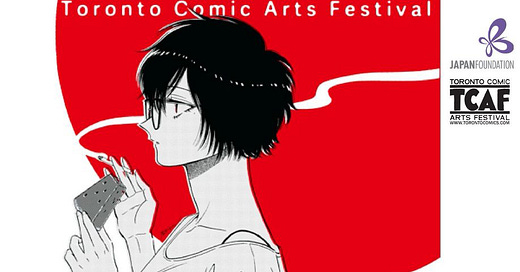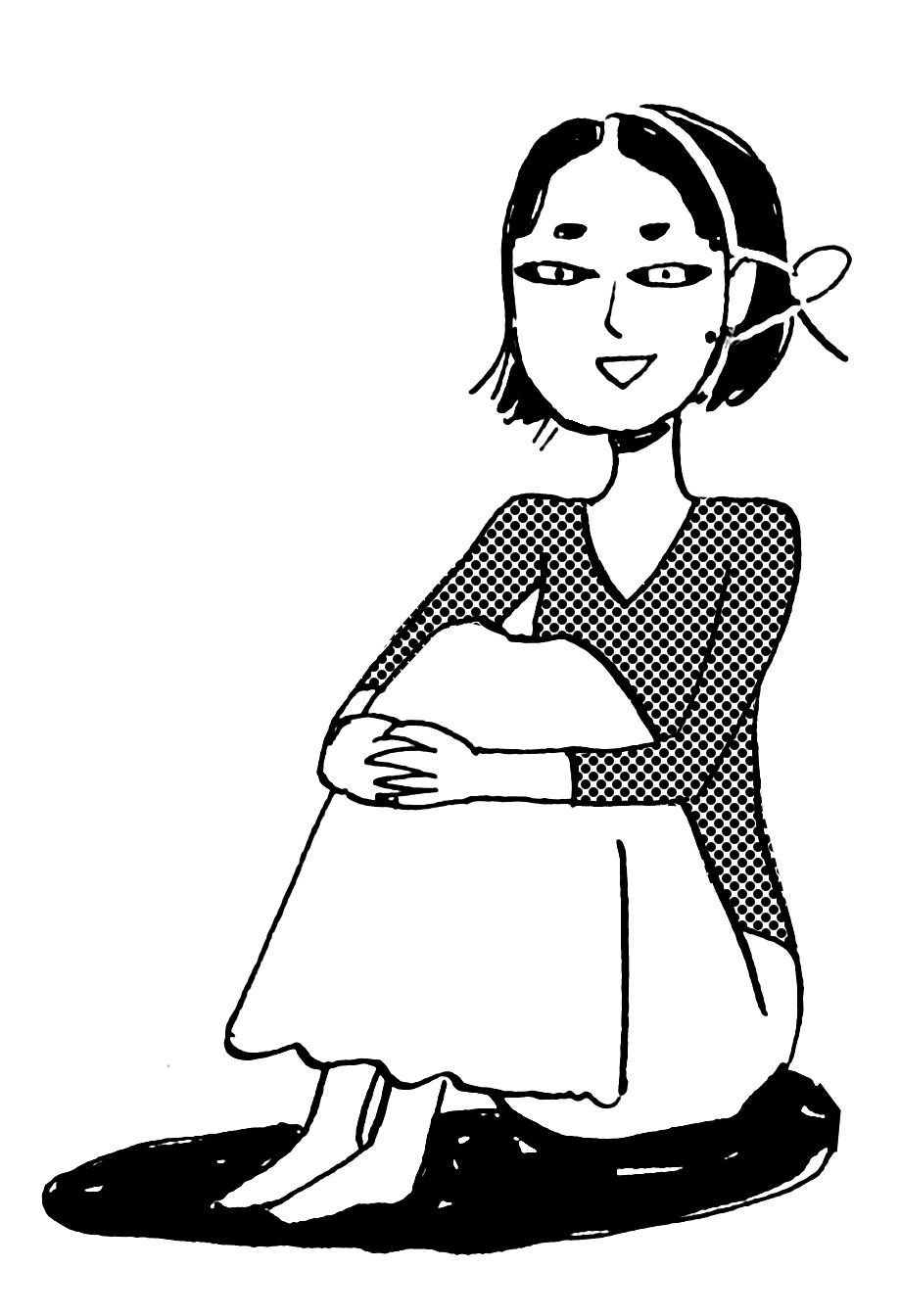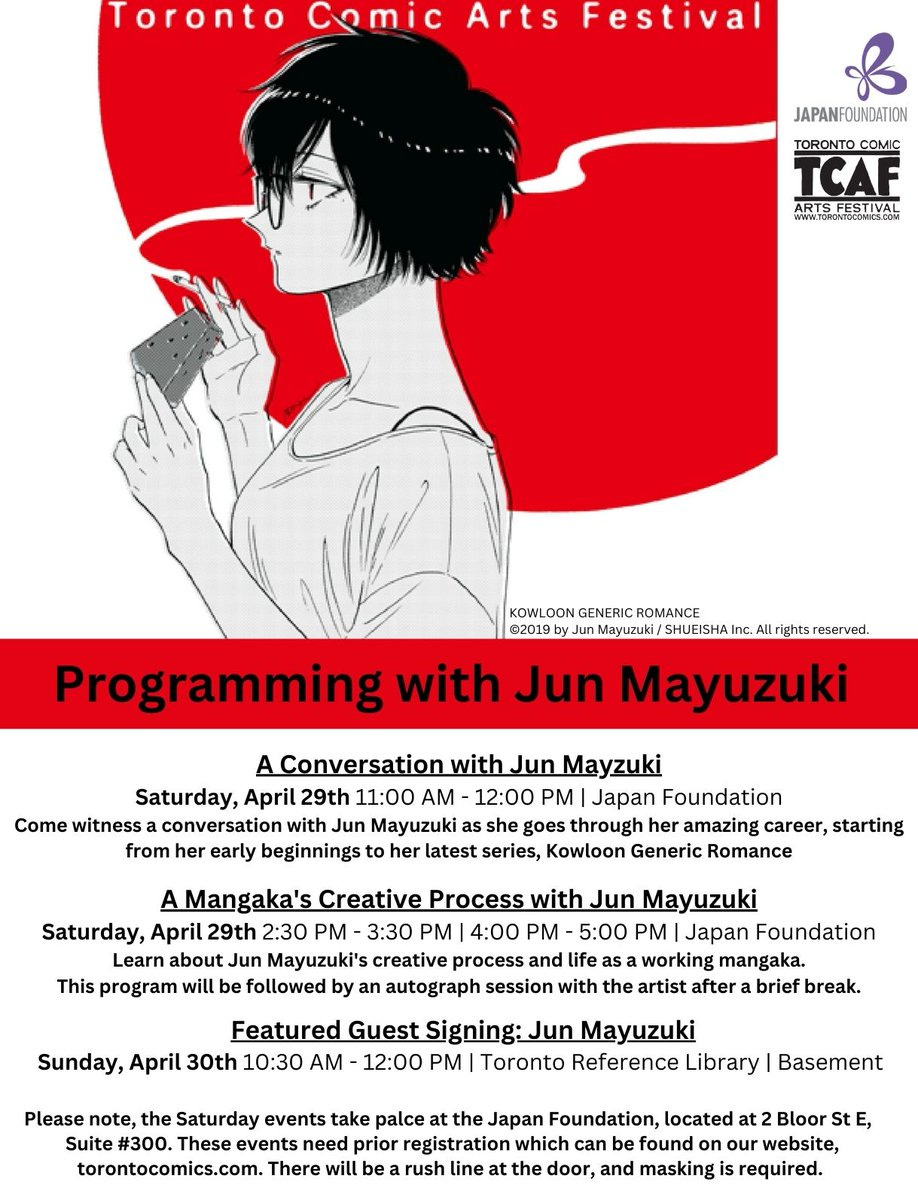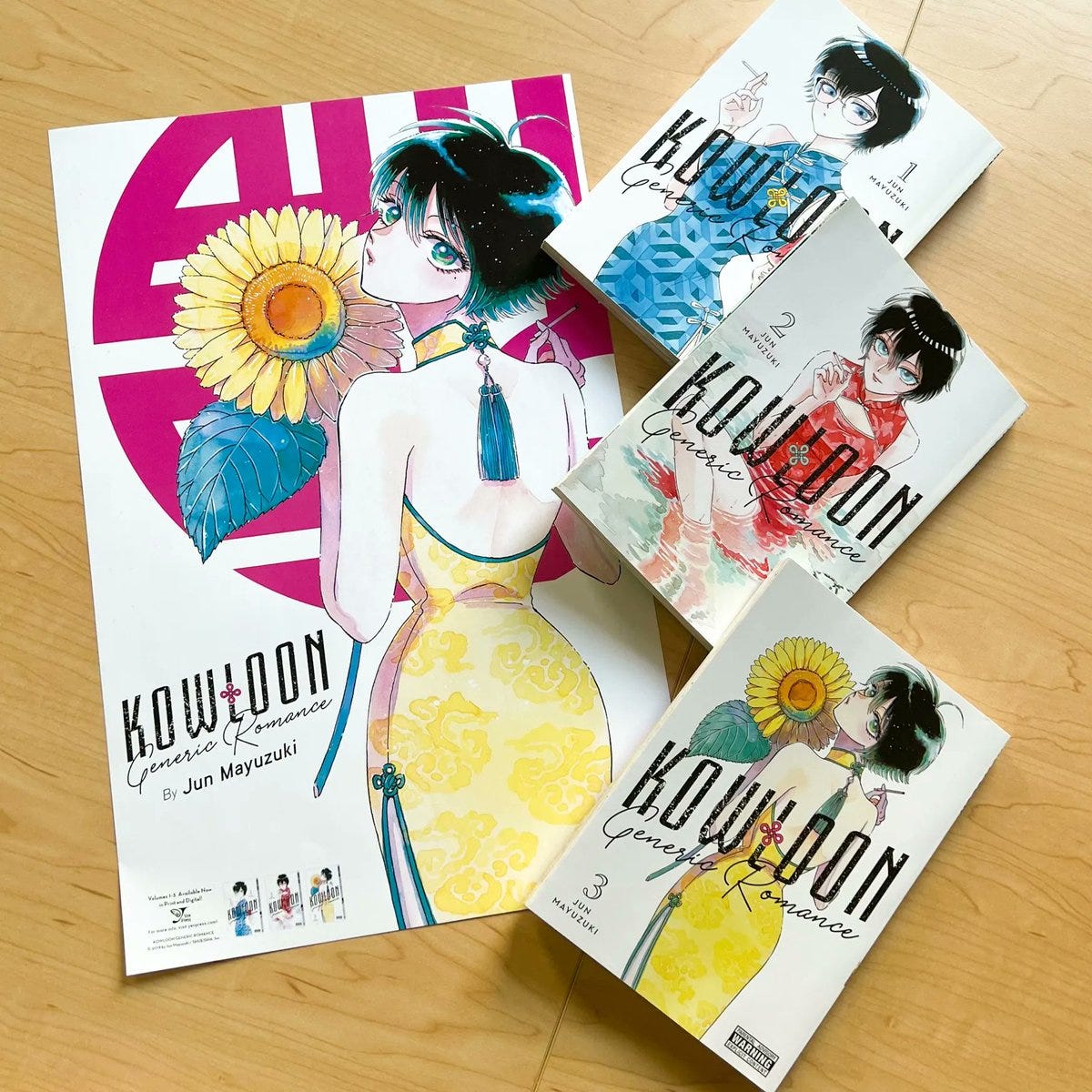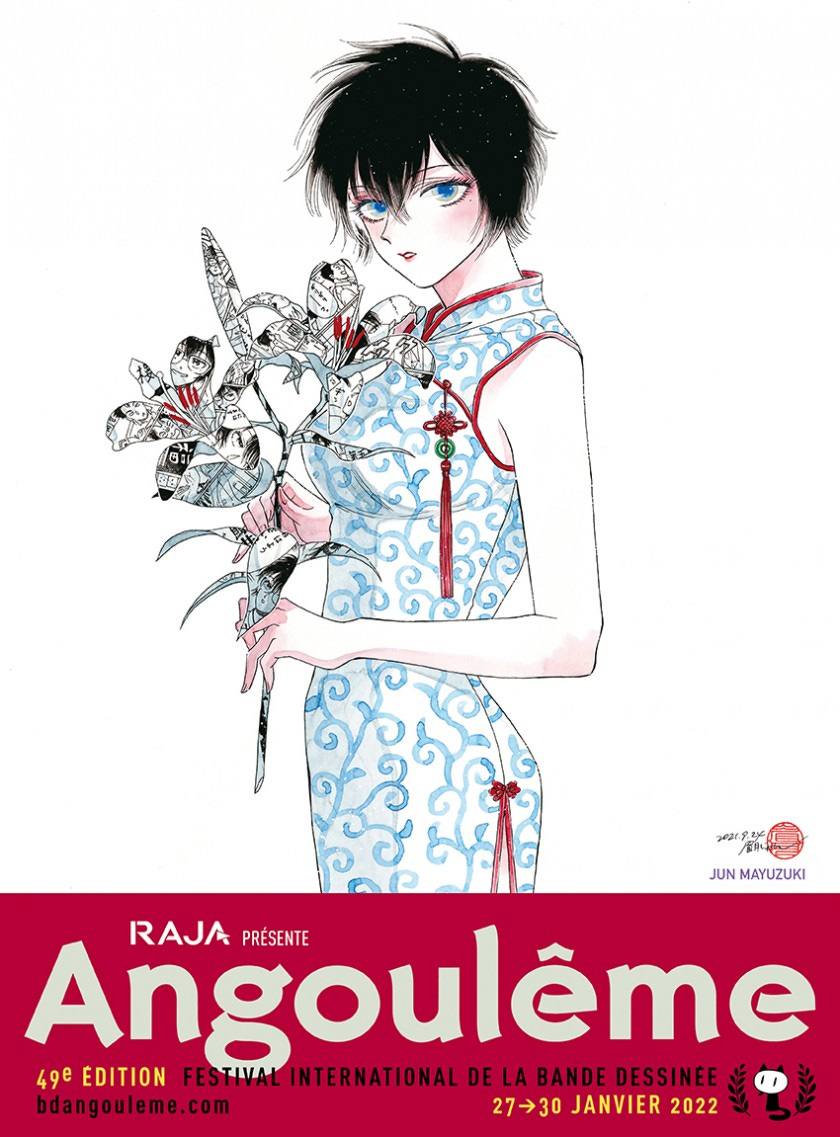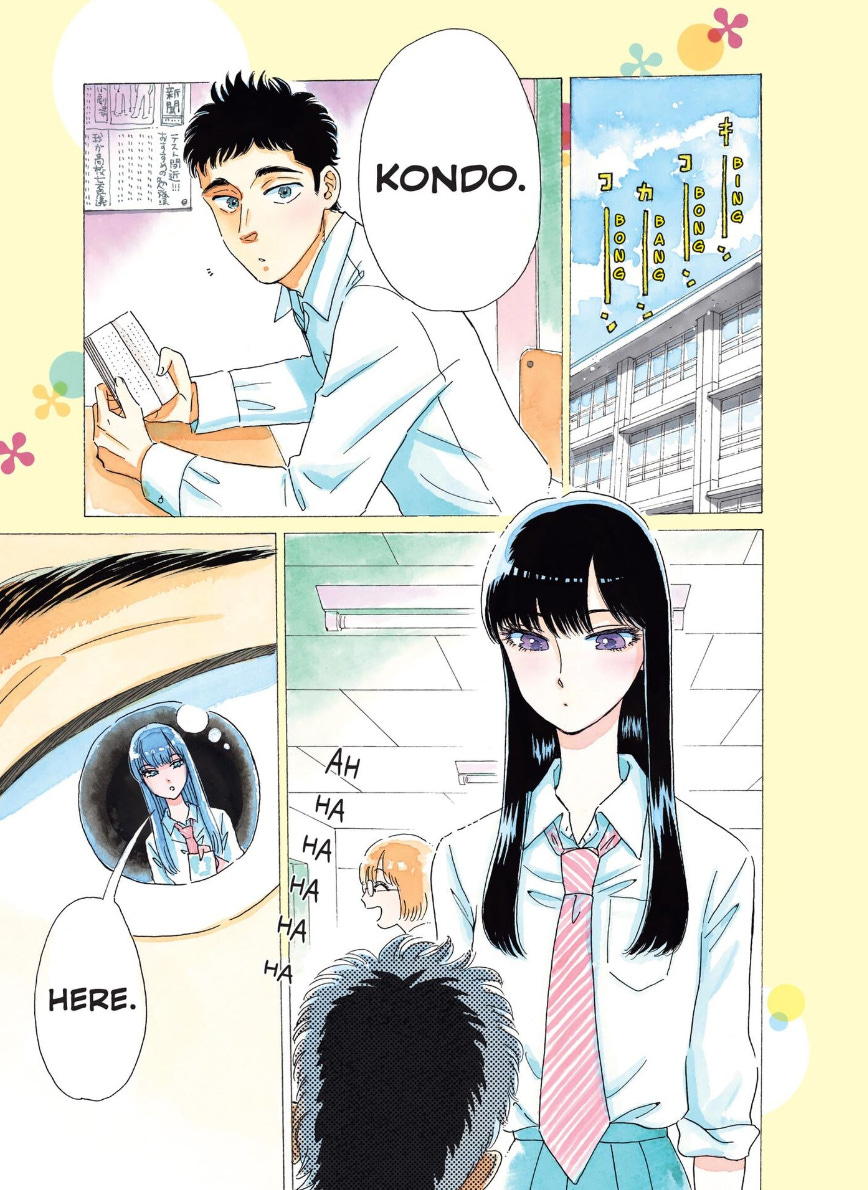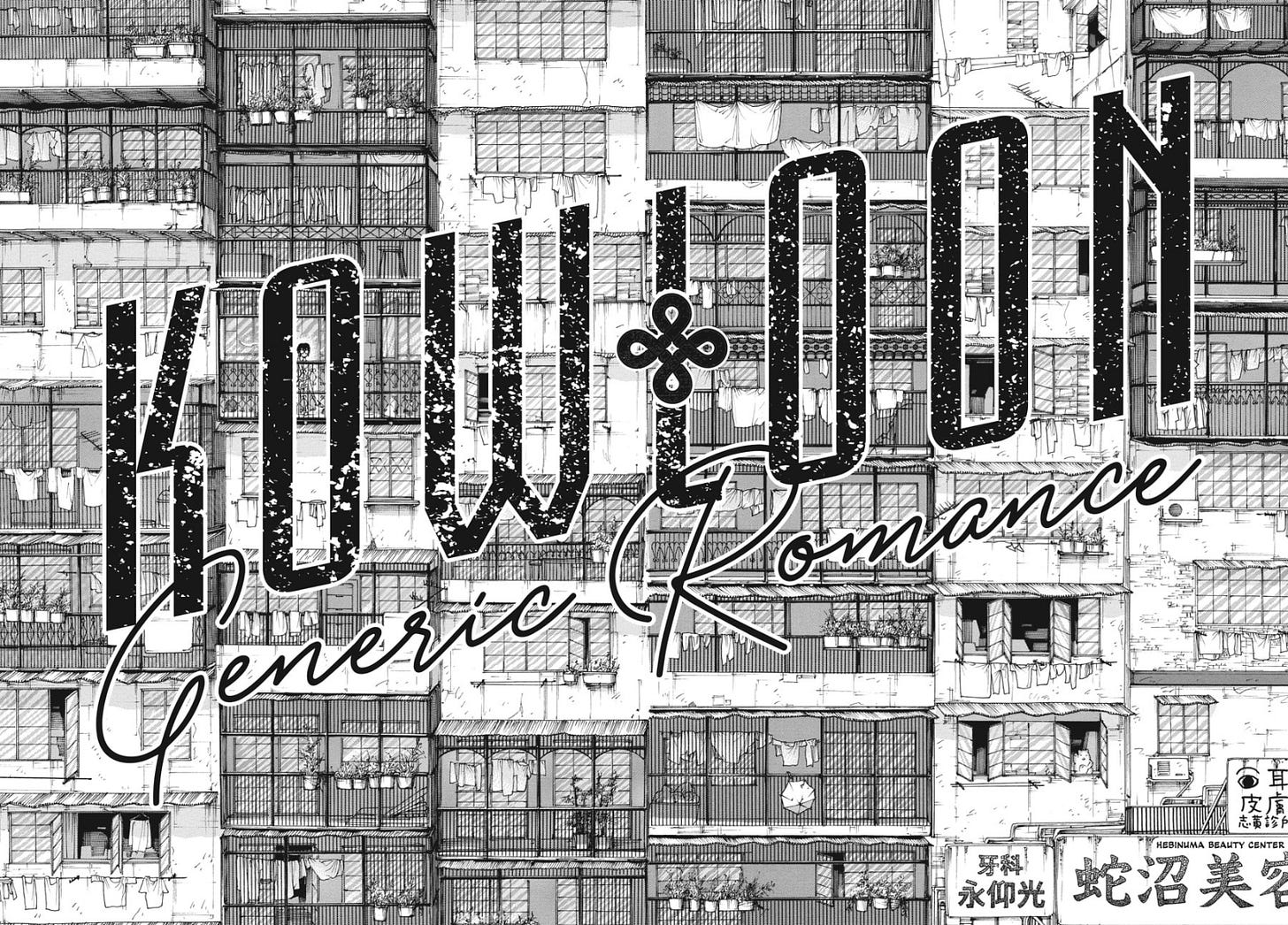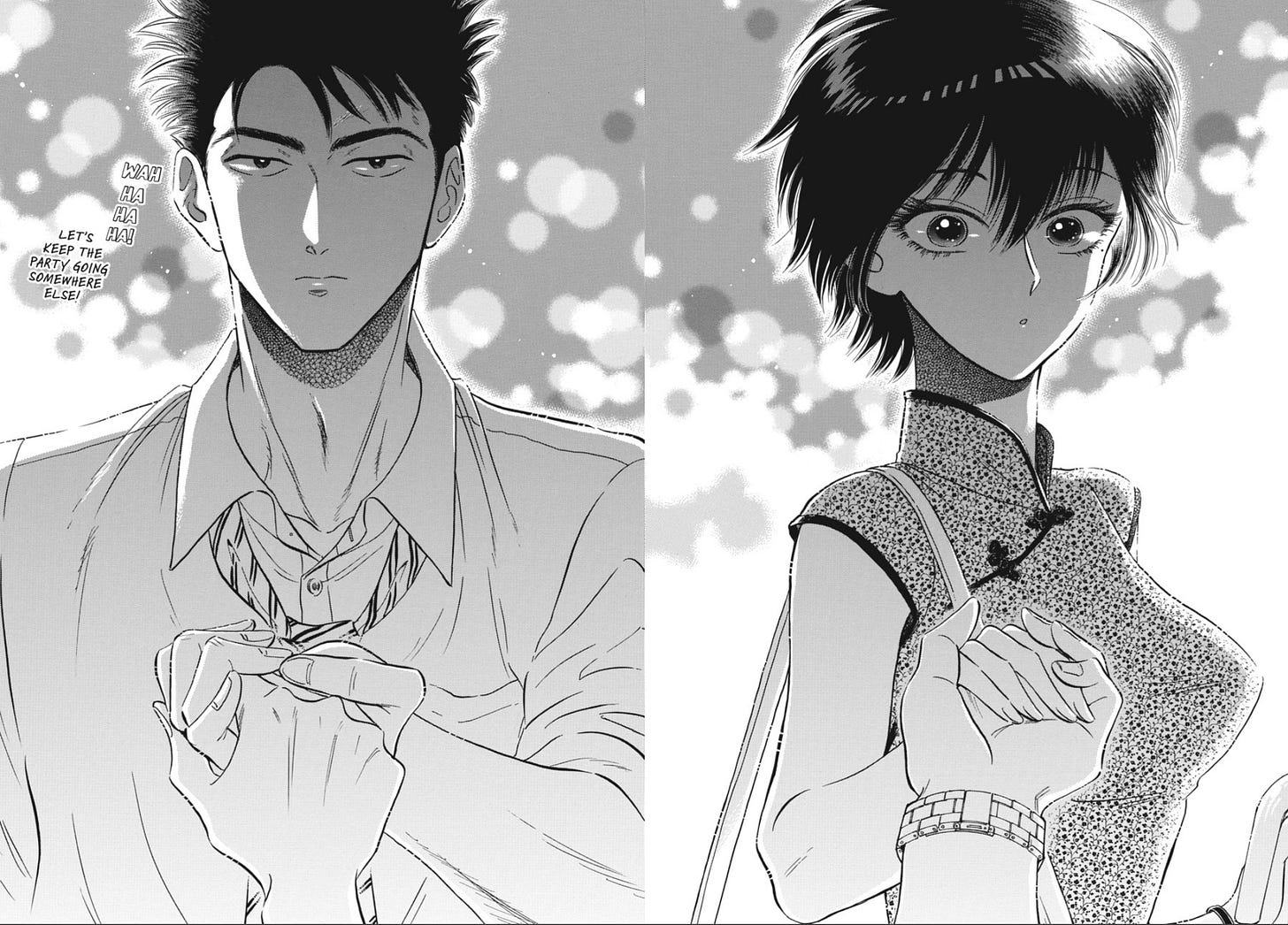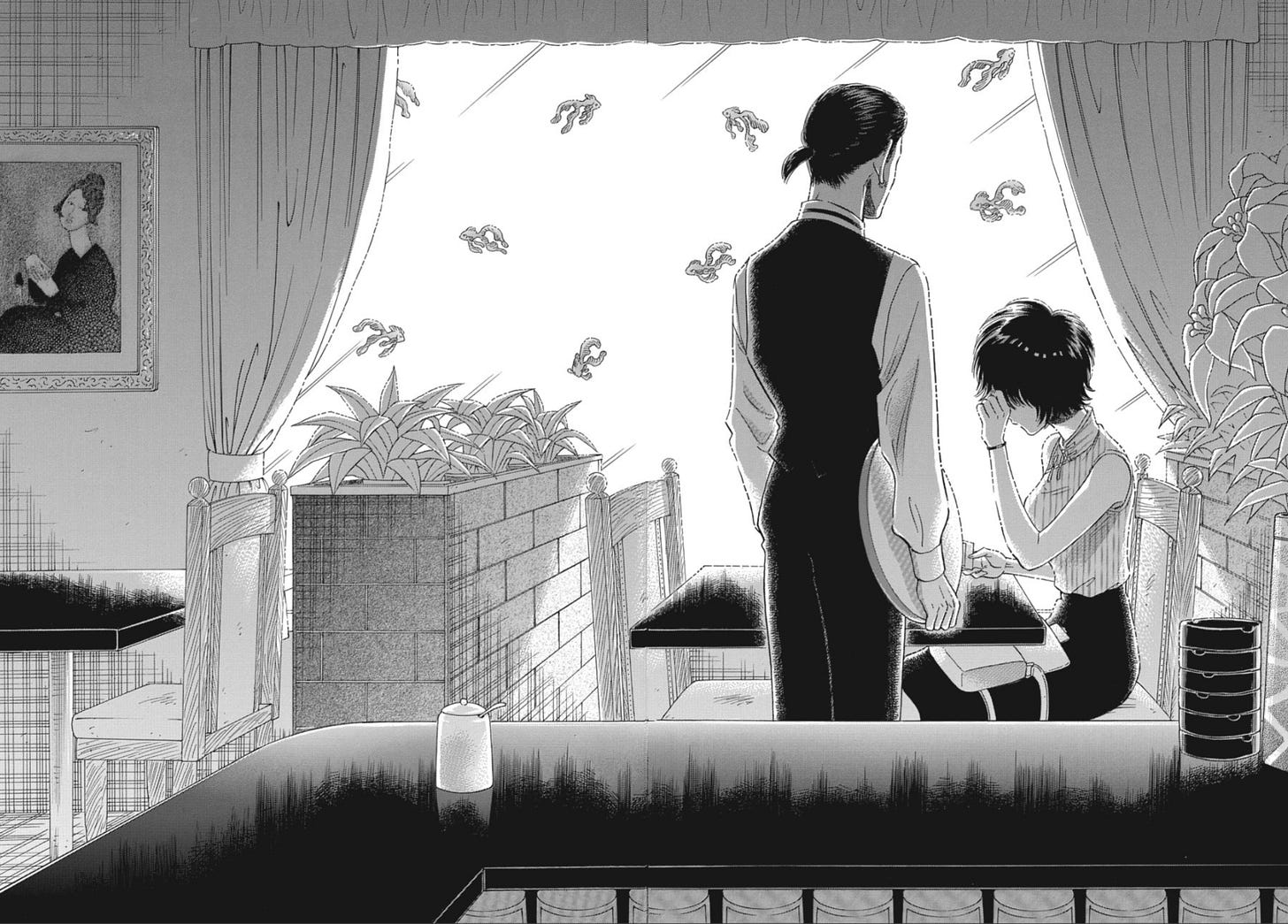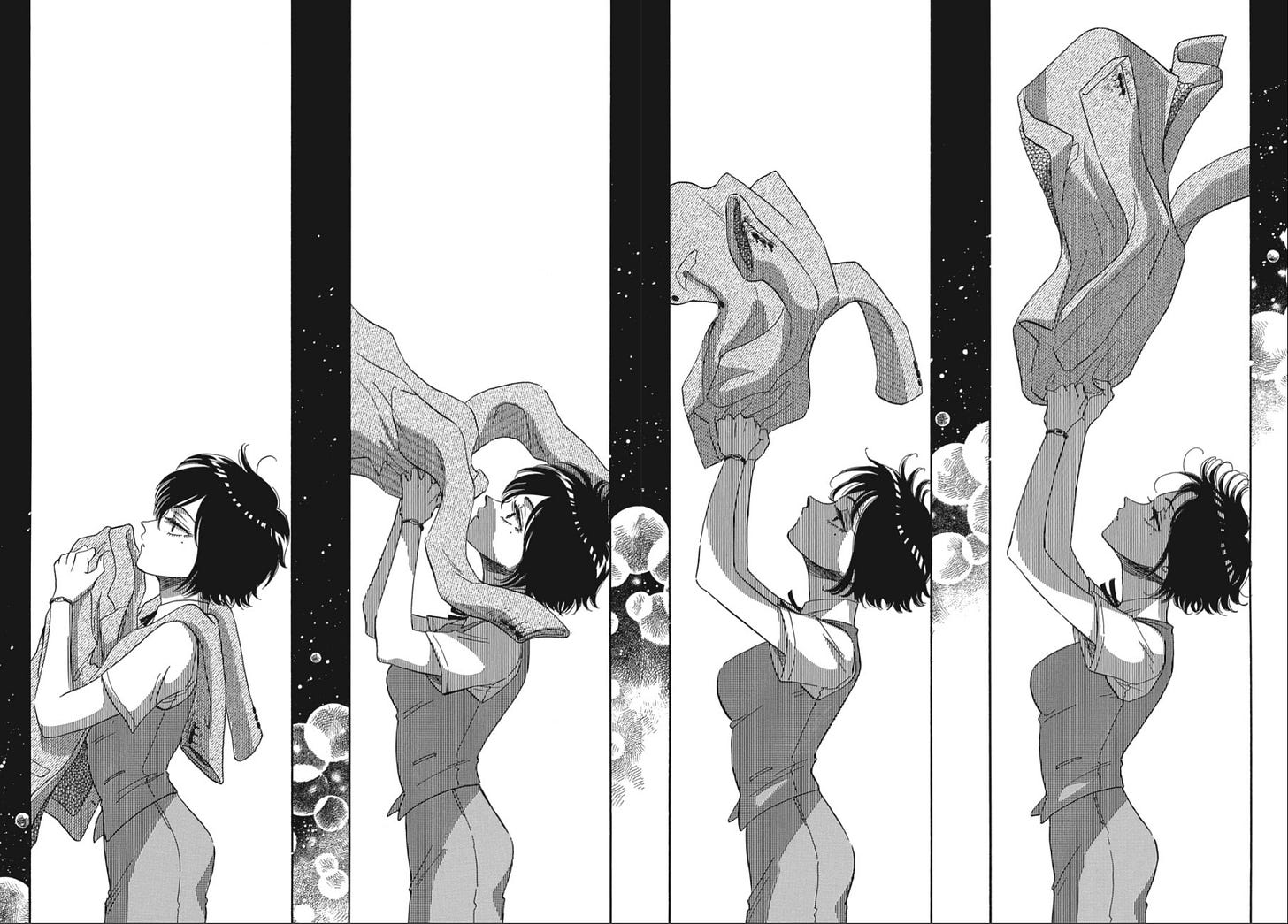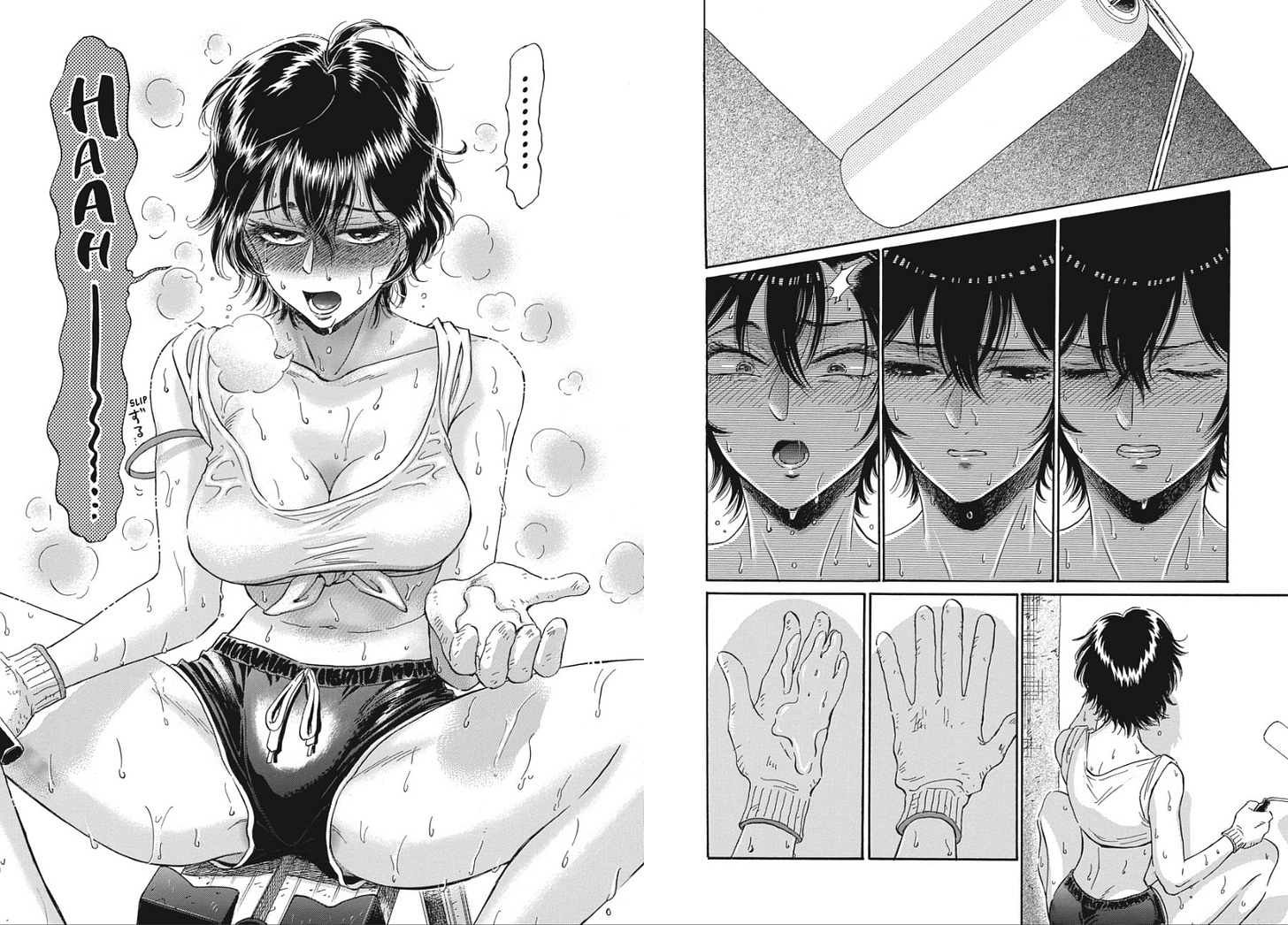INTERVIEW: Jun Mayuzuki, creator of Kowloon Generic Romance
TCAF 2023 guest Jun Mayuzuki, the creator of romcom/sci-fi series Kowloon Generic Romance talks with Deb about her comics career and how nostalgia influences her gorgeous and genre-defying stories.
by Deb Aoki
Jun Mayuzuki, the creator of Mangasplaining fave Kowloon Generic Romance is a featured guest at Toronto Comic Arts Festival 2023.
This annual celebration of comics from all over the world has welcomed numerous notable manga creators in the past, including Yoshihiro Tatsumi, Junji Ito, and last year’s special guest from Japan, Akane Torikai. While I’m not able to attend TCAF this year to meet Mayuzuki-sensei in person, she and her editor Hakko Okuma graciously agreed to answer a few questions prior to her trip to Canada to share with Mangasplaining Extra readers.
If you haven’t yet subscribed to Mangasplaining Extra, here’s an easy way to start.
Subscribers get immediate access to exclusive articles and interviews like this, and paid subscribers will get some amazing manga in their inboxes weekly. We’ll be announcing some new series in a few weeks, so get ready for that! Also…
SPOILER WARNING: As much as possible, I tried to avoid spoilers here, but as part of my conversation with Jun Mayuzuki and her editor, we do discuss and show a few pages from Kowloon Generic Romance that reveal some plot twists and key scenes from Vol. 1-2. I recommend you read those volumes before reading the Kowloon Generic Romance section of this interview.
ABOUT JUN MAYUZUKI
Born in 1983 in Yokohama, Japan, Mayuzuki made her professional debut as a manga creator in 2007, with a short story about a teenage witch, Sayonara Daisy. This award-winning manga creator is known for her gorgeous artwork and masterful storytelling that often includes unexpected twists that keeps readers coming back for more.
Her first work released in English, After the Rain (a.k.a. Koi wa Ameagari no You ni) is a gentle coming of age story about Akira, a high school girl who takes a part-time job at a diner after an injury puts her career as a track and field athlete on hold indefinitely. But Akira has other reasons for taking this job: She has a crush on the restaurant manager, a divorced man who’s almost 20 years older than she is.


After the Rain was serialized in Gekkan Spirits, a monthly seinen manga magazine published by Shogakukan from 2014, then moved to Shogakukan’s Weekly Big Comic Spirits magazine in 2016, where it ran until the series ended in 2018.
After the Rain was nominated for the Manga Taisho award in 2016, and won the 63rd Shogakukan Manga Award in the General category in 2018. The series was published as 10 volumes in Japan, and is available in English in five 2-in-1 omnibus volumes by Vertical (now Kodansha).
This story was also adapted as an animated series by Studio WIT and is streaming now on Amazon Prime or available as a Blu-Ray / DVD from Sentai Filmworks. It was also adapted as a live-action movie released in 2018.
Kowloon Generic Romance is Mayuzuki’s current series and maybe her most surprising and delightful creation to date. It’s published by Yen Press, and we discussed vol. 1 in a recent episode of Mangasplaining too!
Set in the notoriously lawless Kowloon Walled City near Hong Kong, Mayuzuki’s story is one that defies simple genre definitions. Sometimes it’s a romantic comedy, sometimes it’s a slice of life tale that has hints of 1980s pop nostalgia, and other times, it’s a mysterious science fiction story set in a bustling, real-but-not-real Chinese city that’s nostalgic and futuristic at the same time.
When Kowloon Generic Romance begins, we meet Reiko Kujirai, a young woman who works at a real estate office with her happy-go-lucky colleague Hajime Kudou, who might or might not be more than just a co-worker. In the first 8 chapters of this story, Mayuzuki depicts a bustling city with people of all ages eating, playing mahjong, shopping, and making a living… but drops hints along the way that she might be depicting a different version of infamous Kowloon Walled City than the one that was demolished in 1994.
Kowloon Generic Romance has been serialized in Shueisha’s Weekly Young Jump since 2019. It’s currently up to volume 8 in Japan, while the latest release in English, volume 3 just came out this month from Yen Press. It’s also available in French (with slightly different cover art!) from Editions Kana. This stylish manga video trailer gives you a peek at the French edition:
Kowloon Generic Romance has also been nominated for several awards, including the Manga Next! Awards in 2020, as well as the annual Kono Manga ga Sugoi! (This Manga is Amazing) list and the Manga Taisho Award in 2021.
I was encouraged to check out Kowloon Generic Romance ahead of the release of its first volume back in August 2022 by Mark de Vera, Sales and Marketing Director, Yen Press, who also had these words to share:
“Between its sensual storytelling and its breathtaking art, Jun Mayuzuki’s Kowloon Generic Romance has become one of my favorite manga from Yen Press. Helping prepare for Mayuzuki-sensei’s TCAF visit and the two panels she will participate in has been one of the highlights of my time at the company, and I hope all those in attendance and Mayuzuki-sensei herself enjoy this year’s Toronto Comic Arts Festival!”
-Mark de Vera, Yen Press
Our Q&A with Jun Mayuzuki and her Shueisha / Weekly Young Jump editor Hakko Okuma was conducted over email, and was made possible thanks to Festival Director Miles Baker and translator / International Guest Coordinator Mimmy Shen from the Toronto Comics Arts Festival, the editorial team at Shueisha, along with Yen Press and Kodansha US.
If you’re attending Toronto Comic Arts Festival from April 29-30, don’t miss out on your chance to meet Jun Mayuzuki at the scheduled events and signings at the Japan Foundation Toronto and the Toronto Reference Library and get one of these lovely Kowloon Generic Romance posters from Yen Press too.
And now after all that pre-amble, my Q&A with Jun Mayuzuki:
A CONVERSATION WITH JUN MAYUZUKI
Thanks for taking the time to answer my questions today. I know this will be your first appearance at TCAF – but have you been to Canada before this?
JUN MAYUZUKI
No, it’s my first time.
What are you most looking forward to doing or seeing while you're in Toronto?
JUN MAYUZUKI
I’m planning to see Niagara Falls.
TCAF is a really interesting comics show, where artists from all over the world come to show and sell their books and illustrations. Have you exhibited at comics shows in Japan before?
JUN MAYUZUKI
Shows like this are rare in Japan, so I haven’t participated in any.
I also recall seeing your artwork on the Angouleme Festival posters in March 2022! I wondered if I had missed seeing you there, but I guess you weren’t able to attend the show then? But that said, have you been to France at other times, or visited any other comics shows outside of Japan?
JUN MAYUZUKI
I was invited to a manga event in Taiwan, and had an autograph session there. And I didn’t get to go to France, actually. I really wanted to, though.
Oh, man. That’s too bad! There are several of your books published in French (by Kana), so I hope you get a chance to go and meet your fans there soon. Is there anything that you’re looking forward to with this trip to Canada, as you meet your fans in N. America for the first time?
JUN MAYUZUKI
I think it would be really interesting to hear their perspectives and opinions, which might differ from Japanese readers’. It would also be interesting to find some commonalities, and experience moments of “Oh, so you feel similarly about this with Japanese readers!”
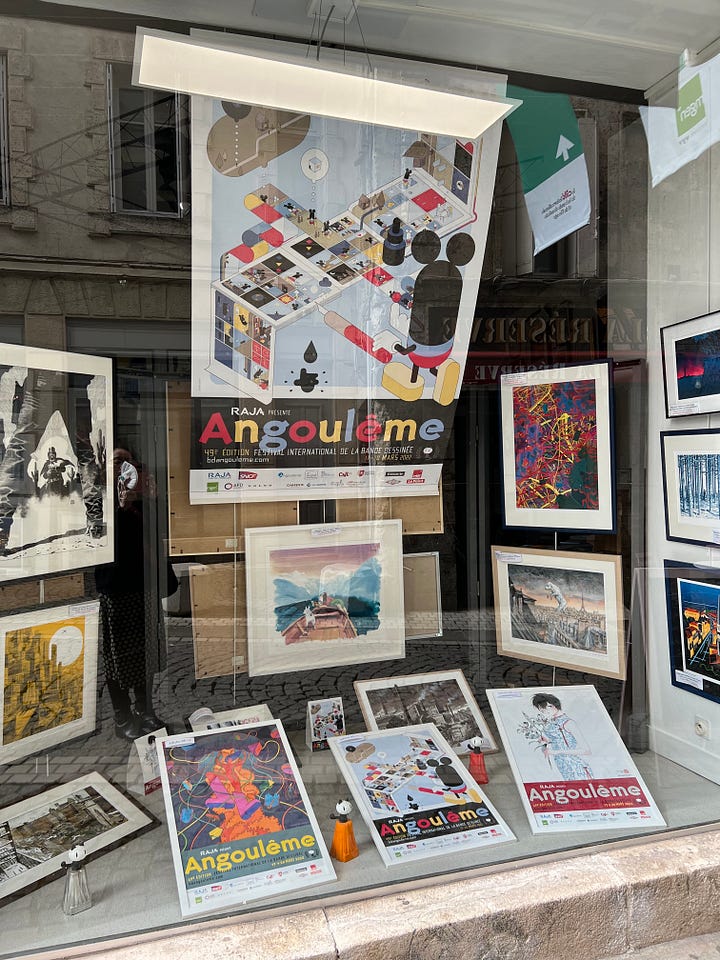

BEGINNINGS AS A MANGA CREATOR
Drawing manga takes a lot of time and dedication to succeed. How did you get interested in drawing manga?
JUN MAYUZUKI
I’ve wanted to become a manga artist ever since I can remember. I just had this vague idea that it was something I would become.
I do what I enjoy, so I’ve happily been unaware of ever feeling like it’s a lot of hard work or difficulties, even if other people might see it that way.
Was there a manga series that you liked to read when you were young that inspired you as far as how and why you draw manga?
I was really into the monthly shojo manga magazines Ribon and Nakayoshi when I was in elementary school. I enjoyed titles like Tenshi nanka ja nai (I’m No Angel by Nana and Paradise Kiss creator Ai Yazawa) and Chibi Maruko-chan (Little Maruko-chan by Momoko Sakura), as well as Sailor Moon, which was serialized in Nakayoshi.


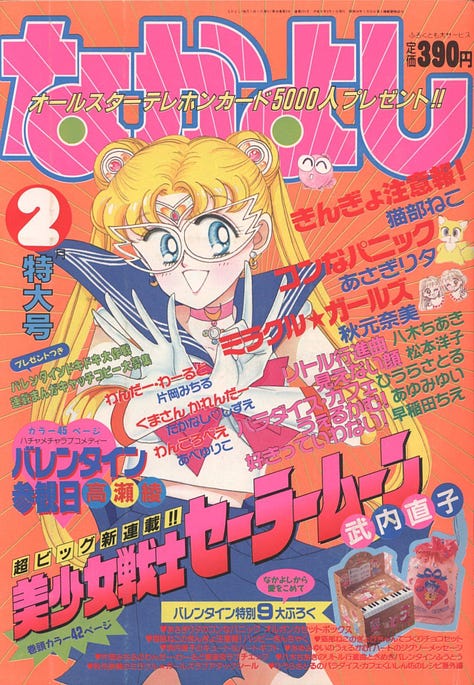
Your artwork is very stylish, detailed and distinctive! Did you go to art school, or are you self-taught?
JUN MAYUZUKI
My art style is self-taught, but I’ve always wanted to learn to draw formally.
The first time I read your work, I thought it had a slightly retro feel, but in a fashionable way – like a fun 80’s / 90’s pop vibe. Other articles about your manga mention this too – that it feels nostalgic and new at the same time. What was the feeling or inspiration behind this aspect of your work?
JUN MAYUZUKI
I’ve always wanted to emulate the feel of Ribon, which I read when I was young, and the happiness you get when you’re in contact with something you love. So I consciously think about that 90s atmosphere, since that was when I engaged with anime and manga the most.
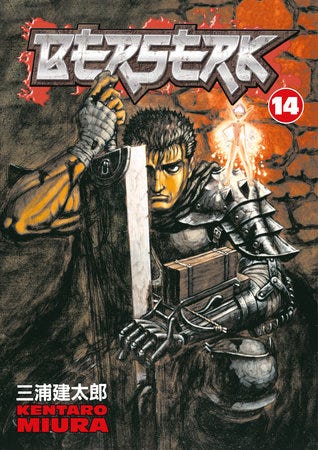
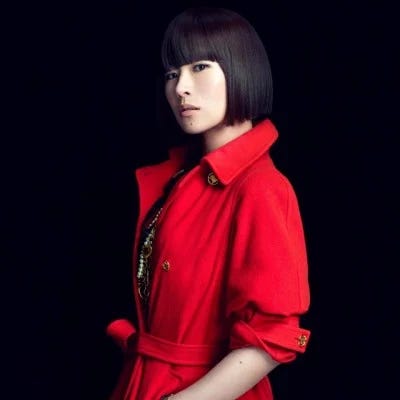
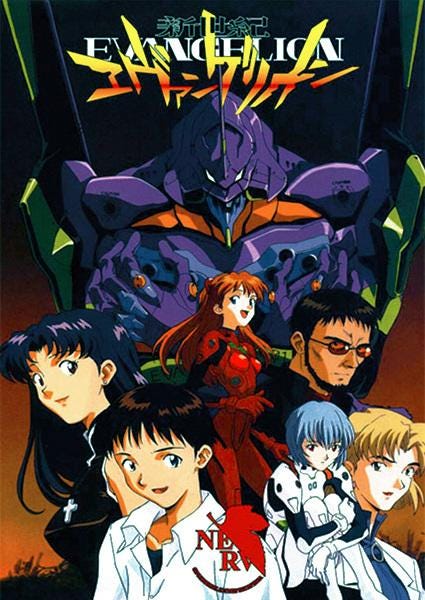
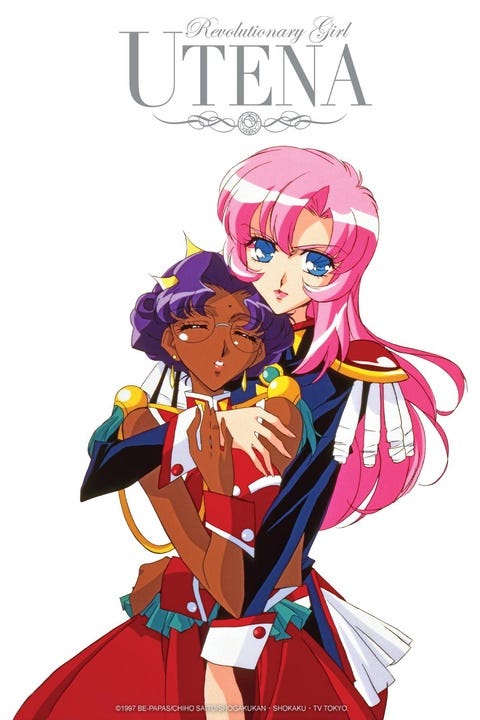
In an interview posted on the Shueisha Online website, you mentioned several influences: Singer-songwriter Ringo Sheena, Berserk, Revolutionary Girl Utena, and Neon Genesis Evangelion. These things are all so different! Can you share a bit about what you like about them? How has this influenced your manga stories or approach to your career?
JUN MAYUZUKI
What they have in common is that the creator’s worldview and interests are reflected strongly in their works. I can tell they had fun and really took care with how these titles were created. It doesn’t matter what the medium is; those kinds of works are dripping with confidence, which makes them really appealing.
Your debut work Sayonara Daisy came out in 2007. Without spoiling it too much, Sayonara Daisy is about a young witch who falls in love with a classmate. When you look at this early story now, what memories or feelings come to mind?
JUN MAYUZUKI
I made it with the intention of entertaining and surprising my readers… and to hopefully throw them a curveball.

NOTE: Sayonara Daisy is included in a collection of her early short stories from 2007-2017 that’s available in Japanese from BookWalker - or in French from Kana as Jun Mayuzuki Anthologie 2007-2017.

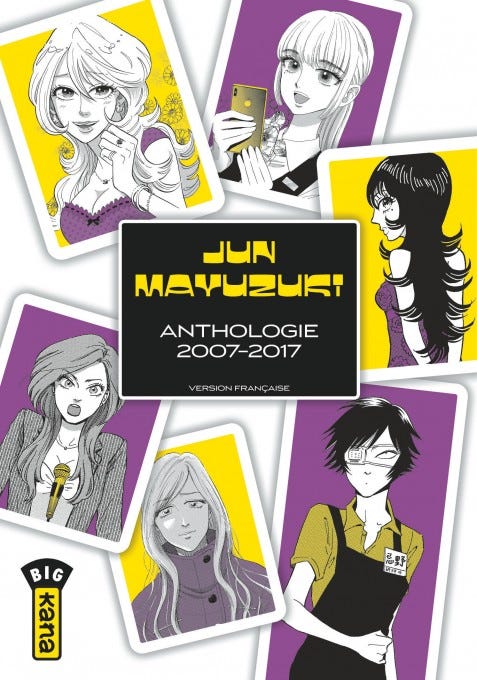
What did you do before you became a full-time manga artist? Did you have any full-time or part-time job that wasn’t manga-related? Or some manga artists get their start working as assistants to other professional manga creators. Did you do anything like that?
JUN MAYUZUKI
I never became a full-time employee anywhere, since I was sure I’d be a manga artist. But I worked part-time. I did some work as an assistant as well, but I didn’t do it constantly. I also treated it like a part-time job.
Do you currently work by yourself, or do you have assistants?
JUN MAYUZUKI
I have one assistant right now. Sometimes, I’ll call on another one to help with the digital work.
Is there any advice you’d like to give to your younger self, who was just starting out?
JUN MAYUZUKI
“Keep going, just like that!”


AFTER THE RAIN
After the Rain is the first work I read from you in English. It’s about Akira Tachibana, a high school girl who works at a diner, and her crush / friendship with Masami Kondo, the restaurant manager who’s a divorced single dad and almost 20 years older than she is. Age-gap romances are popular in manga, but there’s a significant age difference between these two characters. This kind of thing can be kind of tricky to pull off as a romance, but I think After the Rain handles it gracefully.
Tell me a little more about how this story came to be. Was it inspired by movies or books you read, or someone you know or anything like that? How did you pitch this story to your editor?
JUN MAYUZUKI
I drew a couple of one-shots that feature a man and woman who are far apart in age. Pairing two people with an age difference is something I really like to do, regardless of their relationship or gender. We settled on having a middle-aged man and a high school girl when we started coming up with the storyline for a serialization.
Also, this goes back to a previous question, but I wanted to include things that I find nostalgic or that I like in my works. That includes having high school characters in the story.
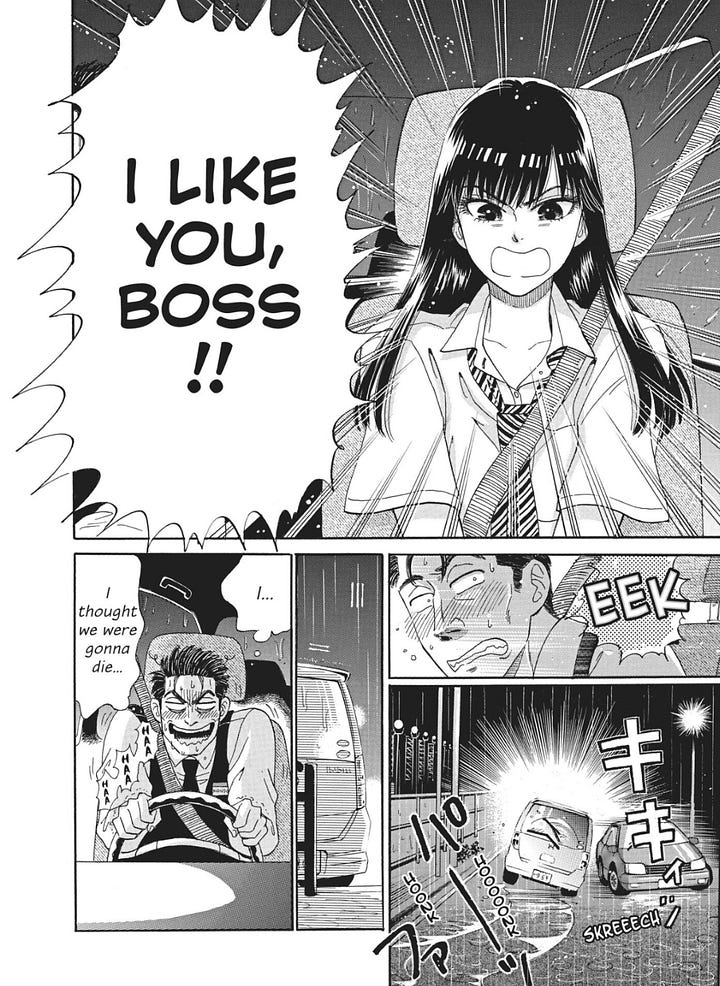
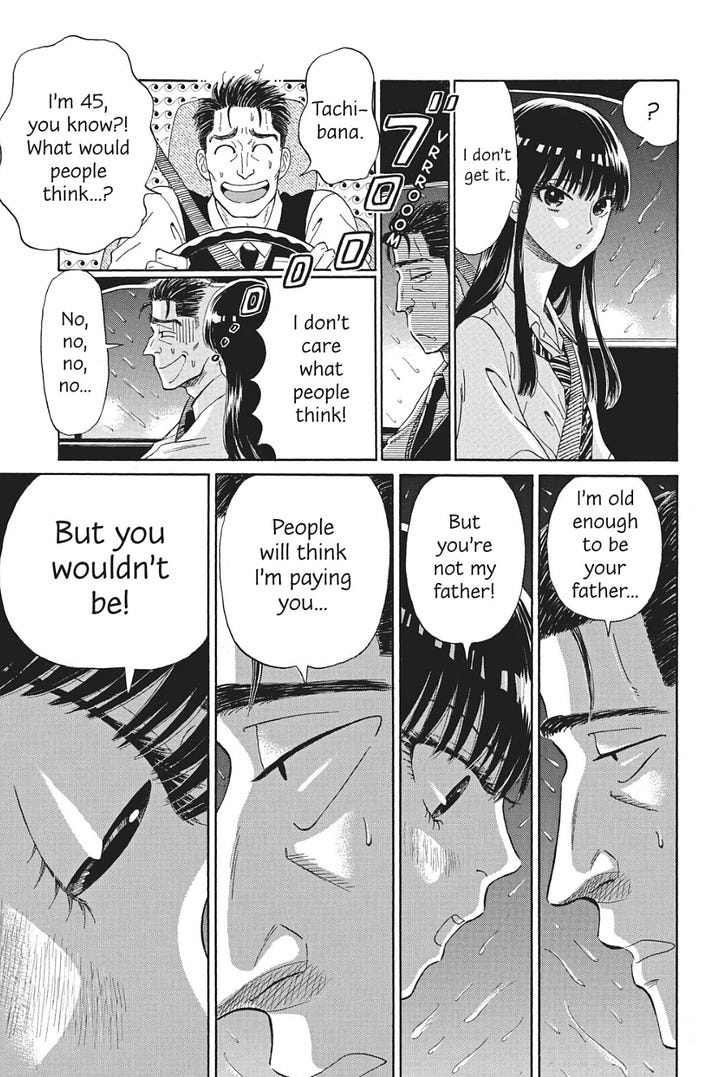
One thing that’s really endearing about this is that Akira is so upfront about her feelings, and so determined to let Mr. Kondo know that she likes him in a romantic sense. Even when he says, “What will people think?” and “I’m old enough to be your father,” she won’t take no for an answer.
I also like that you took your time to reveal more layers about Akira and Mr. Kondo, chapter by chapter – your storytelling has lots of atmospheric, wistful moments mixed with humor and drama that sometimes catches you by surprise. It seems like you were given the space to let this story unfold leisurely over time. Was it always your intention that this series be 10+ volumes, or was that something that happened / was encouraged by your editor after the first few chapters were well received?
JUN MAYUZUKI
I don’t ever lengthen or shorten a series based on reader reactions.
Did you know up front how you wanted this story to end, or did the story change from how you originally imagined it as you were creating it?
JUN MAYUZUKI
The ending was decided from the beginning. I never change the ending, even if the path to get there twists and turns unexpectedly.
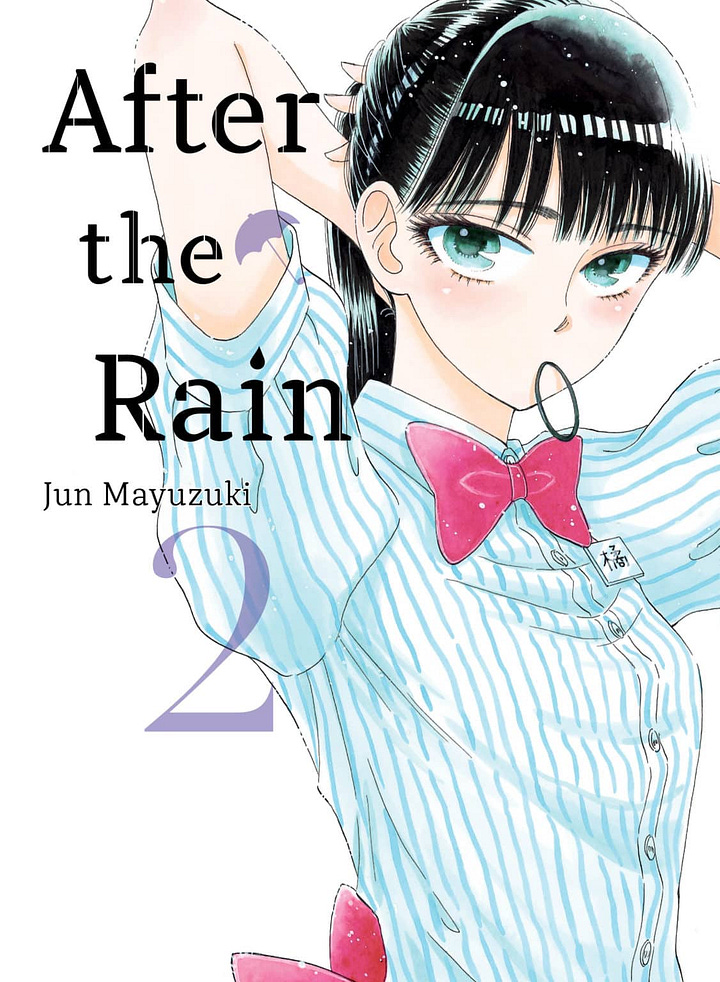
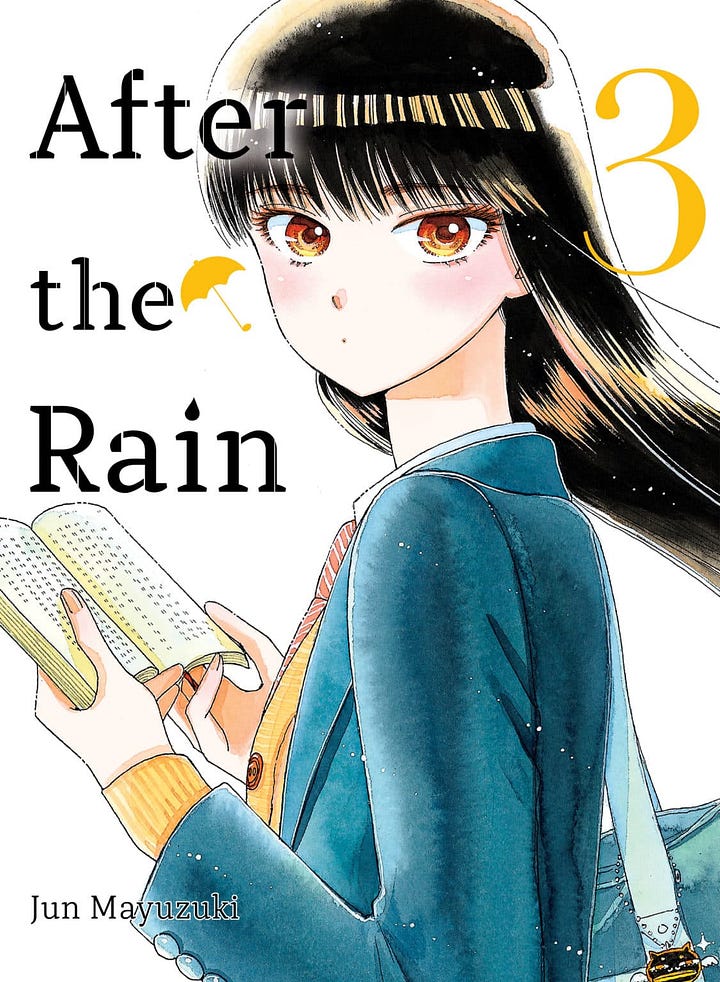
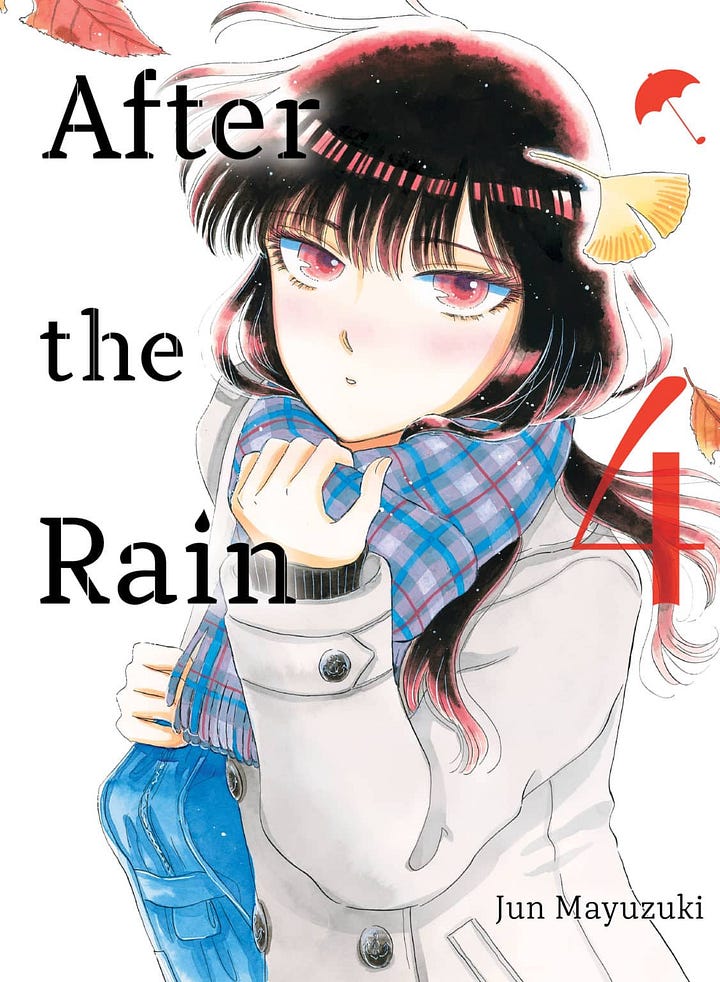
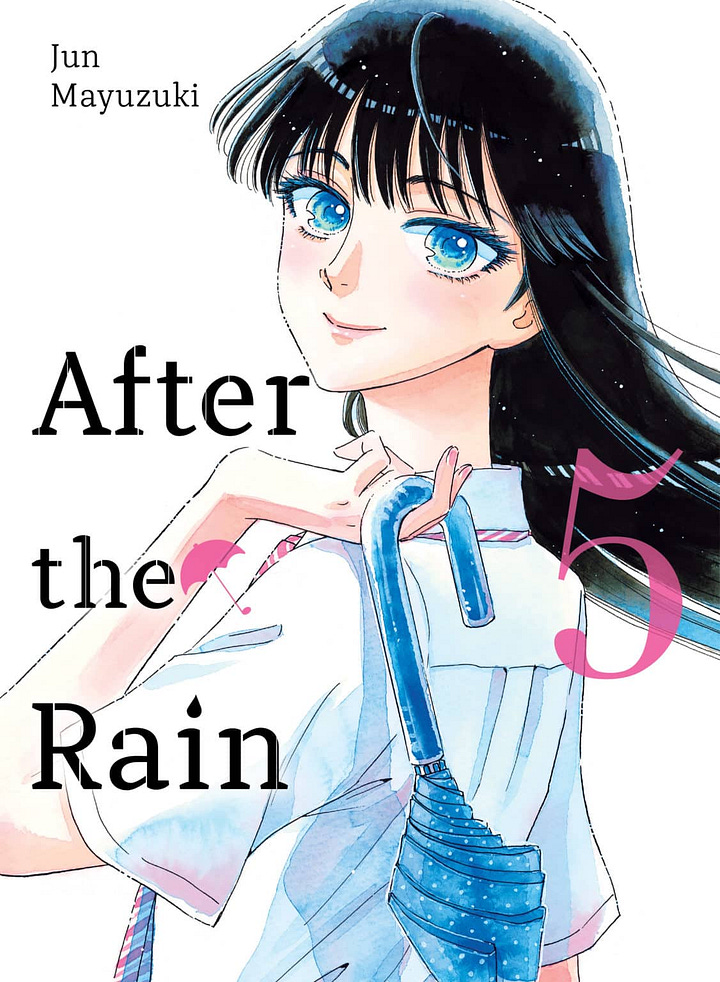
Tell me about a favorite scene from After the Rain where you thought, “Yeah, this is great!” or a scene where you thought, “I drew something that I’ve never done before.”
JUN MAYUZUKI
I like chapters 76 and 77. I drew Kondo and Akira as classmates, and told the story from each of their perspectives. I just had a flash of inspiration about wanting to do a story like that, right before we were about to head into the ending, but it was a lot of fun because I got to see a new side to my characters.
Would you like to share any thoughts about what it was like to see your story adapted as an animated series or as a live action TV show?
JUN MAYUZUKI
I was pretty confident when I drew up the storyboard for the series that it would be adapted as a live-action and as an anime, so my thought was “Hee hee, I knew it.” I had fun working with the anime and movie staff afterward. Their worlds seem adjacent to the world of manga, but the scale and methods are very different. It was a really good experience for me, and I’m very thankful.
Here’s the After the Rain anime trailer (dubbed) from Sentai Filmworks:
And here’s the Toho Films trailer for the live action version of Koi wa Ameagari no You ni:
KOWLOON GENERIC ROMANCE
While After the Rain was set in your hometown, Yokohama, and it felt really grounded in modern day Japan, I was surprised to see that your next series Kowloon Generic Romance was set someplace in a completely different time and place and has a retro/futuristic vibe.
I’m fascinated by Kowloon Walled City too, so knowing that your story was set there was very intriguing to me when I heard about it. What was it about this place (that was demolished in 1994) that made you want to create a story set in that time and place? What makes Kowloon Walled City special?

JUN MAYUZUKI
I’ve always felt a strong pull from Kowloon Walled City, and I’ve always wanted to draw a manga about it. I’m happy that I finally have a story to tell befitting the Kowloon setting, even if drawing the backgrounds is a grueling process.
NOTE: The opening title pages of Chapter 1 of Kowloon Generic Romance, where Reiko is enjoying a cigarette on her apartment balcony is a pretty good example of the level of detail required to depict this incredible setting.
As I understand it, Kowloon Walled City was thought to be a scary, dark and dangerous place to live by outsiders, but the people who lived there considered it to be a close-knit community. However, in your version of Kowloon, it seems to be a very bright and cheerful place!
The other thing that made this story fascinating to me is that artificial city floating in the sky!

And the Dr. Hebinuma character… Well, he’s got some surprises up his sleeve too. As these things popped up in the story, I started to realize, “Oh, this is a different take on this time and place.”
So tell me more about that – what was your inspiration or thoughts behind putting in these “unreal” twists to a time and place that was real?
JUN MAYUZUKI
I think “putting unreal twists to something that’s real” is the freedom of manga, and also what makes it fun. Plus, Kowloon isn’t a historical manga, so I’m drawing my ideal Kowloon—a version of Kowloon Walled City that I’d want to live in.
I’d like to now ask your editor, Hakko Okuma a few questions about your work and what it’s like to work with you.
(NOTE: Besides supervising Kowloon Generic Romance, Okuma-san was also the editor for another Mangasplaining favorite read, Golden Kamuy , which is available in English from VIZ Media. He’s been with Shueisha since 2008 and was involved with the launch of Tonari no Young Jump website. )
How did Mayuzuki-sensei pitch this story to you? What did you think when you first heard the concept?
HAKKO OKUMA
My initial reaction when she first told me she wanted to do a story about the Kowloon Walled City was “That’s Mayuzuki-san for you”.
Because the thing is, after a hit series like After the Rain, readers take note of you for better or for worse. The author has to keep up the good qualities they’re now known for, while also adding something new for readers to grab onto.
Some say that a new idea is simply an old idea that now exists in a new place. Kowloon is exactly that. It’s a busy, lively, symbolic place that brings a feeling of nostalgia to everyone who’s ever known a crowded city. At the same time, it’s a place that teems with an attractiveness that comes from its extraordinary features.
I thought it was a great idea for bringing something new to a generic, universal story.
So my first thought was, “Yes, I get to read a brand new story from this amazing author! And I get to be her first reader!” I was very happy. The subtle motions and detailed depictions that are often missing in other works are present in hers, and I feel like that lends her unique expressiveness.
How did readers, or other editors react to this story when it first came out?
HAKKO OKUMA
We got some great reviews about how the carefully-drawn, detailed depictions and the dramatic spread featuring the title grabbed many readers from the very first chapter. Many people said it felt like they were reading a large-scale movie, and that they felt great anticipation toward the story.
Also, the end of Chapter 1 has a certain something that turns the slice-of-life nature up to that point on its head. Readers were caught off-guard, but in a good way.
I think a major reason the work was mentioned at many manga awards that year is due to the calculated way Mayuzuki planned out the first chapter, and the first volume.
Did you make any suggestions for any changes then?
HAKKO OKUMA
There haven’t been any real changes. I simply tell her the honest reaction from readers using the proper words. Mayuzuki is really fair about reader feedback. She always nods and says “I see, so that’s how that part seemed to them”, and after accepting the comments, takes them into account to create even better works. In that sense, I guess you can say she makes changes.
For me personally, I feel like “sounding board” is a good description of my role. That said, I do remember talking with her really excitedly about repeating the spread in Chapter 8, which is the final chapter of Volume 1, to surprise readers in a way that’s unique to manga.

How has the story evolved over time?
HAKKO OKUMA
I don’t think the theme or the universal feel of it has changed.
But Mayuzuki is the type to draw manga that feels like a diary. She takes the things she’s experienced from her day-to-day life and analyzes them, which makes the details in the world she creates sharper as she goes. I do feel like there’s change, or rather evolution, in that sense. Her work grows and matures, almost in a philosophical way.
What makes this story different or special compared to other manga? Why do you think people like it so much?
HAKKO OKUMA
I think it’s because it’s full of universal desire, which many people can relate to, and which stays relevant regardless of the time. For example: love and romance; the human question of where we’ve come from and what we are; concerns about our reputation among others; the absolute nature of our own perceptions; thoughts and views about nostalgia; advice on finding our path forward to the future. These are all universal, generic topics that people all over the world have thought about at least once, and sought answers to.
But more than anything, it comes from Mayuzuki’s attitude toward creating: “I want people to read my manga, and feel empowered. I want them to feel like they can give it their all tomorrow.” She aims to create manga that acts like a push in the back for her readers to move toward their future, and I think readers can feel that, and are attracted to her works.
Back to Mayuzuki-sensei! Since Kowloon Generic Romance is set in a ‘real’ place, did you do any historical research to help create these stories? Did you get to visit Hong Kong to see the former site of the real Kowloon Walled City (which is now a public park)?
JUN MAYUZUKI
The serialization started before I could visit, due to the global circumstances. I still really want to go.
What or who was your inspiration for the different characters? For example, is Reiko inspired by any person, real, famous or imaginary?
JUN MAYUZUKI
Kujirai is traced from a character in another one-shot called Sokai Psychedelic (爽快サイケデリック / Exhilarating Psychedelic). She doesn’t resemble her inspiration in the least, though. Kudo is based on a certain someone whom I see often (lol).


Do you have a favorite character in this story that you love to draw? Why is this character fun to draw?
JUN MAYUZUKI
I really enjoy drawing Kujirai B. Maybe it’s because she’s full of traits I admire? As an adult woman, I mean.
Is there a character that’s difficult to draw or has changed since the first time you drew them?
JUN MAYUZUKI
The difficult one is Reiko (Reko-pon), the protagonist. She’s in the middle of her character development, which puts her in contrast with Kujirai B, whose style is already set in stone, and it takes a lot of mental effort to make sure I’m cultivating her emotions carefully.
Also, WOW. Kowloon Generic Romance is MUCH sexier than After the Rain. The scene where Reiko is painting a room that’s very hot is very… revealing! Is it because it’s in Young Jump, or are there other reasons?
JUN MAYUZUKI
This goes for my debut title as well, but the moment I get a thought in my head like “I want to try this! I want to draw this!” I have a tendency to just go and do it, which is what happened here. I also seem to really enjoy drawing things covered in drops of liquid, and that goes for both living things and non-living things.
Kowloon Generic Romance is currently at 8 volumes – do you see it continuing for a while – meaning, do you still have more stories to tell within this world, and the relationship between Kudou and Kujirai B/Reiko?
JUN MAYUZUKI
I think 10 volumes makes for a nice length so that’s what I was aiming for, but I have a feeling it’ll take longer.
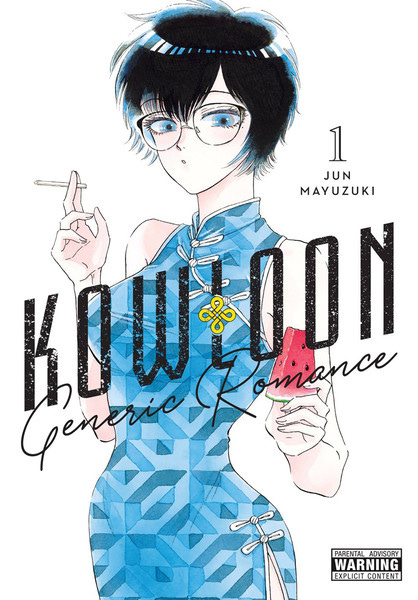
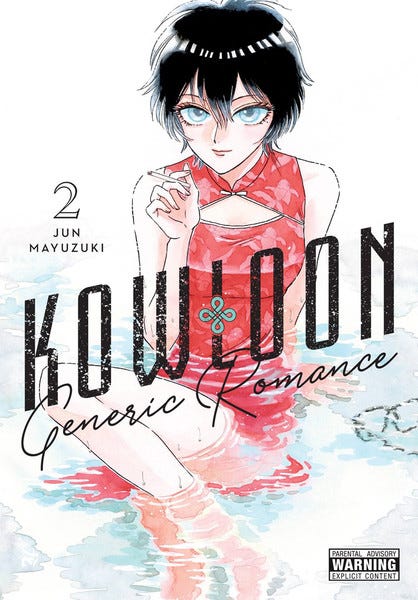
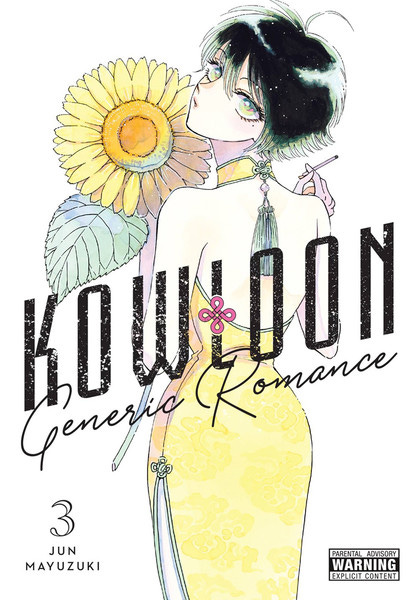
HER CREATIVE PROCESS
Since TCAF is a comics creator-focused show, there’s probably a lot of comics creators who would be very interested in hearing about your creative process.
For starters, how do you draw your manga? Do you work digitally? Or do you use analog tools (e.g. pen and ink) or a mix of the two? How does that work?
JUN MAYUZUKI
The line art is fully analog. I started using digital tools for the toning and brush-ups mid-serialization, but still go back to my analog tools sometimes.
Tell me about how you work with your editor, Okuma-san. What kind of input do you get when you meet / show your initial sketches or story concepts?
JUN MAYUZUKI
My manga have this diary-esque character to them, so many episodes come from daily conversations and catching up with people. When my editor asks me questions or gives me his opinions when this is happening, it helps me get a sharper sense for my characters’ emotions and motivations.
When you're not drawing manga, what do you like to do in your spare time?
JUN MAYUZUKI
My health has been up and down lately, so I often relaxed at home watching movies and decluttering. I’m still decluttering now, while looking for a new place. The plan is to start over fresh, and level up from there!
What do you do to overcome creative blocks?
JUN MAYUZUKI
I sometimes get creative blocks for art, but have thankfully not experienced any blocks when it comes to coming up with stories. So I don’t know how to answer this, but taking walks is probably a good idea. Just spending a few minutes outdoors, walking, can help shift the perspective on things.
Now that you've got over 15 years of experience under your belt as a professional manga artist, what kind of advice would you give to other artists who are thinking of becoming comics creators?
JUN MAYUZUKI
Well, I didn’t really do much public-facing jobs during the first five of those 15 years, so I don’t know what to say, but I do think courage is important in everything you do. You don’t know if something will turn out well or not until you do it, so why not do it first, and think about it again afterward?
And finally, is there anything I might have missed, or anything you’d like to share with your fans, who might be looking forward to meeting you there, or readers who might not be able to make it, but would love to hear from you?
JUN MAYUZUKI
I’m a Japanese manga artist living in Japan, and I draw manga primarily for Japanese readers. So it makes me really happy to know that people overseas have been reading and enjoying my works, including previous titles! Thank you so much. I don’t think it will change the way I express myself, but this has expanded my awareness and my perception. It would make me really happy if you all continue to enjoy reading Japanese manga!
You can keep up with Jun Mayuzuki’s latest work on Twitter at @ameagarinoyouni, by visiting the Young Jump page for Kowloon Generic Romance, or by following the Young Jump Twitter feed at @young_jump (both in Japanese only, sorry)
You can also read a free preview of the first chapter of After the Rain on the Kodansha website.
Also, keep up with the latest releases of Kowloon Generic Romance by visiting the Yen Press website, or following them on Twitter at @yenpress.

